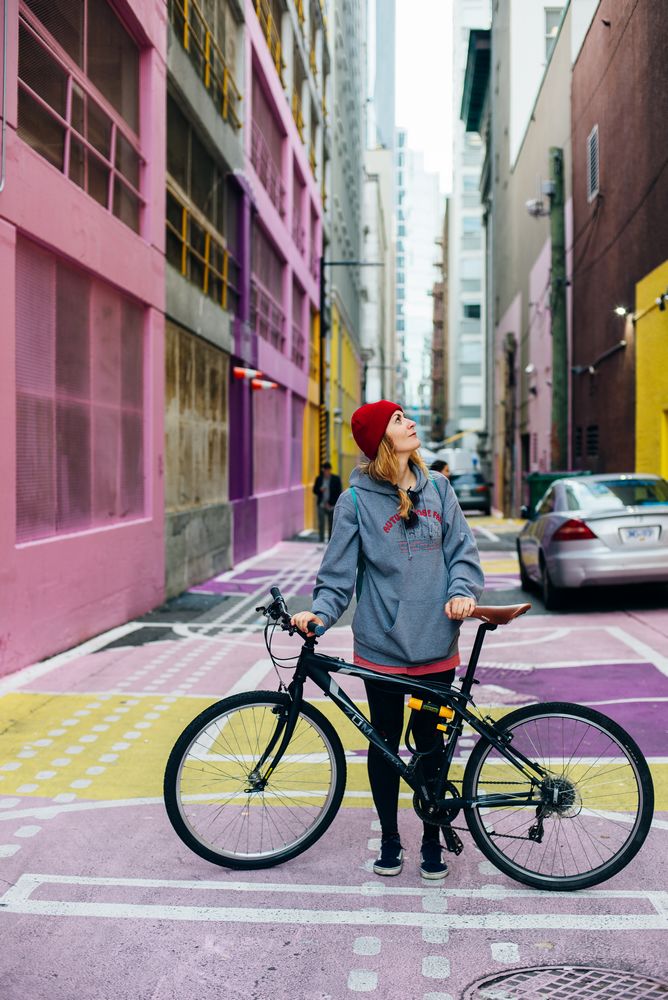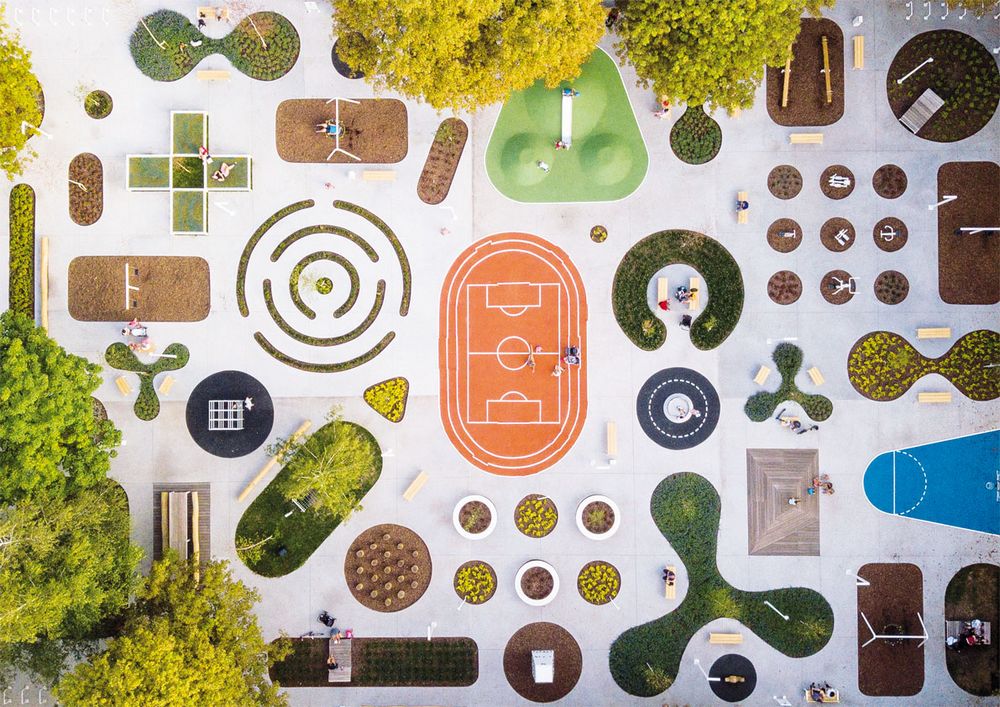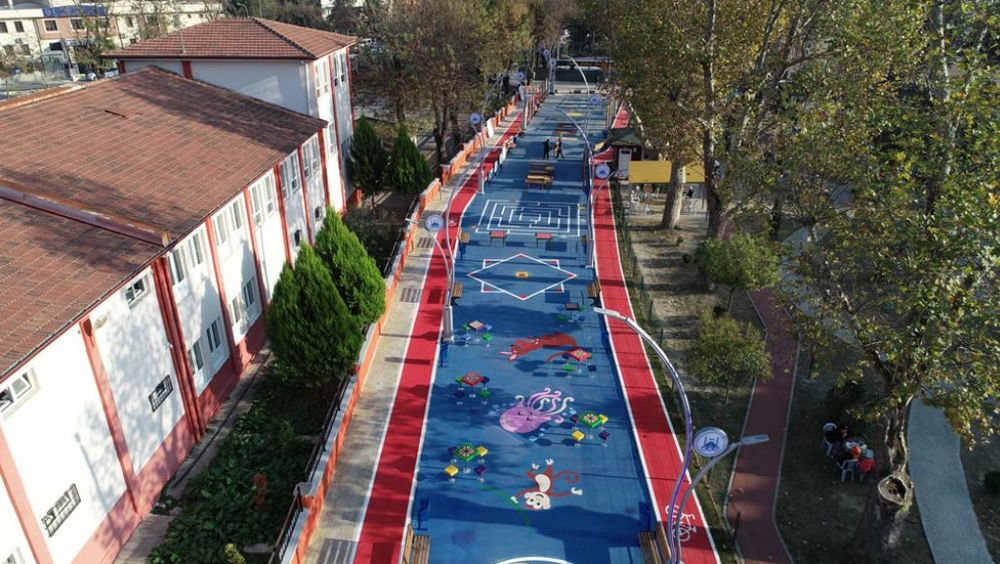5 examples highlighting the importance of active design in town planning
A little-known tool used in sustainable town planning, active design comes in all shapes and sizes, as you can see with these examples.

Have you noticed that when you leave a subway, you tend to take the stairways rather than the escalators if they are colored? That is the objective of active design - to promote spontaneous actions via frescos, signs or vegetalized paths to fight inactivity. But that’s not all! A little-known tool used in sustainable town planning, active design comes in all shapes and sizes, as you can see with these 5 examples.
1. Paris 2024: encourage people to do sports
At the end of 2021, in preparation for the Olympic Games, Paris 2024 published one of the most complete guides to active design applied to spontaneous and unrestricted sporting activities. Public Authorities are incited to adopt active design characteristics, namely:
- unrestricted use;
- non-discrimination;
- incentives;;
- user-based approach;
- urban quality.
Examples of active designs include the François Mitterand Mall games and sports circuit in Rennes and the “pedestrian circuit” in Strasbourg for both of which the methodologies were analyzed in great detail. A “must” document to understand active design for sport to download on the Paris 2024 website!
For even more spontaneous sport downtown, check out 4 initiatives in the city of Lyon combining sport and the exploration of local landscapes.
2. Schools in Blois: active design to slow motorists

© Blois municipality - N. Wietrich
Roads bordering schools are sensitive areas requiring specific safety procedures. Active design can work wonders in this field. The Bloomberg foundation revealed that in all 17 sites studied where frescos had been painted on the roadways, the accident rate involving pedestrians and cyclists dropped by 50% (1)!
After the school holidays in 2022, the city of Blois ran a test on roads near three schools encouraging motorists to slow down. Colored frescos were painted around pedestrian crossings and in the opposite direction on a bike track to improve visibility of these safe havens. The results seem encouraging. In an interview for Urbis web magazine, the city of Blois stated that 65% of parents said they slowed down and speeds dropped to below 30 km/h (2).
3. Vancouver and Alley Oop: restoring life to abandoned urban areas

© IBRESTER / Adobe Stock
Alley Oop was a small run-down alleyway between two buildings, shunned by walkers. But Vancouver’s major active design project has transformed it into a vibrant, charming lane.
With its yellow and pink mural frescos, lights and benches, the alley is now attractive and encourages visitors. Spaces for playing games or simply relaxing incite people to meet there. It is possible to recycle unused spaces inexpensively by making them attractive and safe!
4. Silesia University campus. Improving non-discrimination and inclusion

© Michał Kopaniszyn
Chorzów, Poland, has created a mixed, transgenerational activities zone integrating all the active design codes. A passageway between the campus and the city has been transformed into a green, unfenced park, designed to be used by everyone, whatever their sex, age or handicap.
Games for children, including playground equipments for kids in wheel chairs, are close to fitness spaces for seniors. The unusual design means that everyone can invent their own game rules. There are also vegetalized relaxation areas that encourage lazing and chatting between games and training sessions. Check out our blog to see other ways of promoting sports downtown!
Transform your city into a sports ground
5. The Kids’ Street in Adapazari: returning public spaces to young people

© Adapazari municipality
Over the years, children’s playgrounds had been pushed further and further into the suburbs, confined in fenced spaces and all featuring more or less the same equipment in every district. What Adapazari, a city in Turkey, is trying to do is to bring children back to play in the town center through active design, without strictly speaking creating adventure playgrounds.
This colorful example applies active design to a whole street behind an elementary school. In addition to hopscotch layouts, mazes and basketball pitches, the Kids’ Street (Çocuk Hakları Sokağı) proposes 440sq.m. of cycle tracks, 345sq.m. of footpaths and 435sq.m. of green spaces.
These examples of active design show that by combining colors, plants and small street furniture projects in sustainable town planning can take on a multitude of shapes and sizes without costing the earth and taking a long time to complete.
(1) Bloomberg: Asphalt Art Safety Study Historical Crash Analysis and Observational Behavior Assessment at Asphalt Art Sites (pdf)
(2) Urbis: Design actif : Blois fait le bilan



